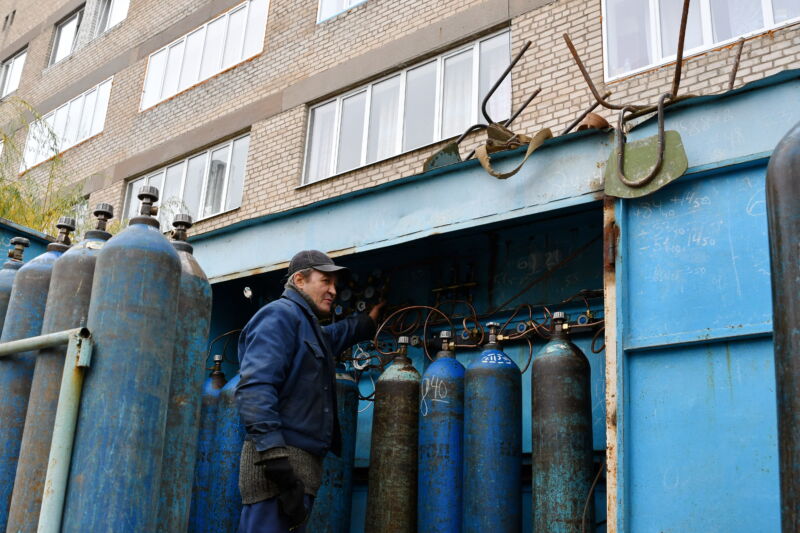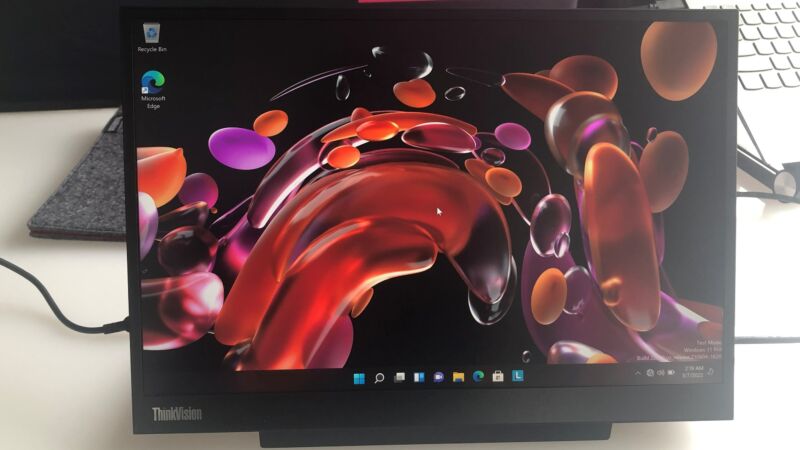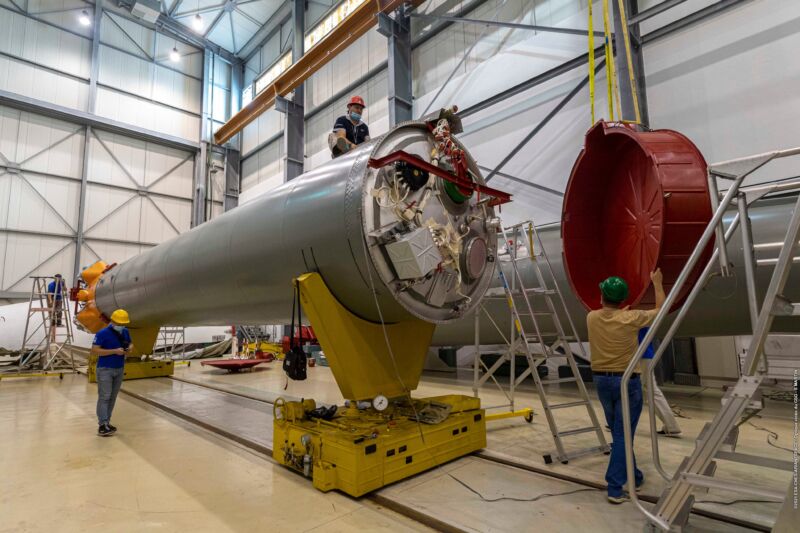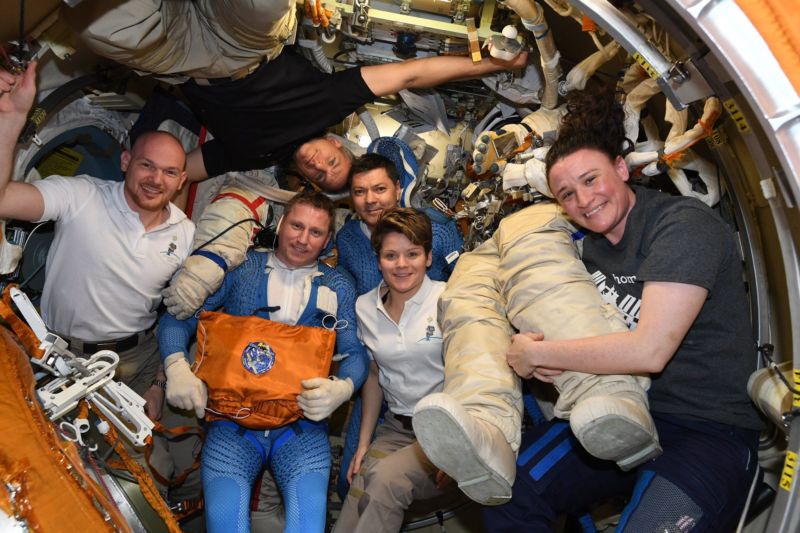
Enlarge / A worker is seen servicing oxygen cylinders for COVID-19 patients in Kramatorsk city hospital. (credit: Getty | SOPA Images)
The majority of Ukrainian hospitals could run out of life-saving medical oxygen as soon as today, putting at risk the lives of thousands of critically ill patients amid the pandemic, the World Health Organization warned Sunday.
The United Nations agency said it is looking into ways to increase supplies, which would likely require a safe-transit corridor through Poland. "It is imperative to ensure that lifesaving medical supplies—including oxygen—reach those who need them," WHO Director-General Dr. Tedros Adhanom Ghebreyesus and WHO Regional Director for Europe Dr. Hans Kluge said in a joint statement.
Amid the Russian attack and invasion, trucks are currently unable to transport oxygen supplies from producers to hospitals across Ukraine, including the capital of Kyiv, the WHO reported. The onslaught is also hampering the production of medical oxygen in the country. Several medical oxygen generator manufacturers are running low on zeolite, a critical production component that is imported. Safe transport of zeolite into Ukraine is also needed. Drs. Tedros and Kluge also warned that patients are at risk because hospitals are facing power shortages, and ambulances transporting patients are at risk of being caught in crossfire.








